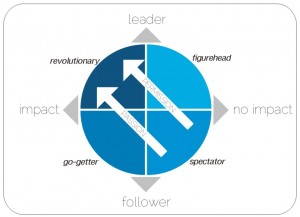This is the last post in the “How To Make An Impact” series.
The purpose of walking students through the Impact Graph is to help them see where they are and challenge them to go further in their ability to make a difference in their environment. One of the caveats to this kind of conversation is the desire of the student. A student must want to grow.
Characteristics like persistence, determination, teachability, and personal discipline serve as the foundation for a student who desires to make a greater impact. As I show a student the Impact Graph and we figure out where he or she sits, I tell them the path to leadership is paved by two key elements: passion and permission.
Passion is an emotional response and intense devotion to a cause or project or person. It is found on the inside of a person. People are most effective in leadership within the areas they are passionate about.
Permission is the willingness of others to serve in a place of leadership over them. Powerful leadership doesn’t happen through coercion or bossing people around. People are most effective in leadership when others willingly follow them.
If you’ve read the previous posts in this series, you were given a brief overview of the four quadrants: spectator, figurehead, go-getter, and revolutionary. Combined with the elements of passion and permission, the Impact Graph provides the following talking points:
- A revolutionary has both passion and permission to lead while a spectator has neither.
- A go-getter has passion but not the permission to lead.
- A figurehead has permission to lead, but no passion.
- The greater the level of passion, the greater the impact.
- The leader needs to look for go-getters in order to make the most impact.
- The figurehead fills a role and typically moves back to spectator when completed.
- When people select us, it pulls us into leadership. When our passion moves us, it pushes us into leadership.
As a way of practical application, I encourage students to act in the following ways:
- Identify your passion.
- Focus on areas where you can make the most impact.
- Bring other people on board and get them involved in your efforts.
- Look for opportunities to make a difference for the good of others.
Not every student will want to become a revolutionary. And that’s okay. But every student wants to be significant and ultimately, to be a part of something meaningful. I hope the Impact Graph is a helpful tool for you as you help students realize their potential and tap into the opportunities around them.
Share this Post

